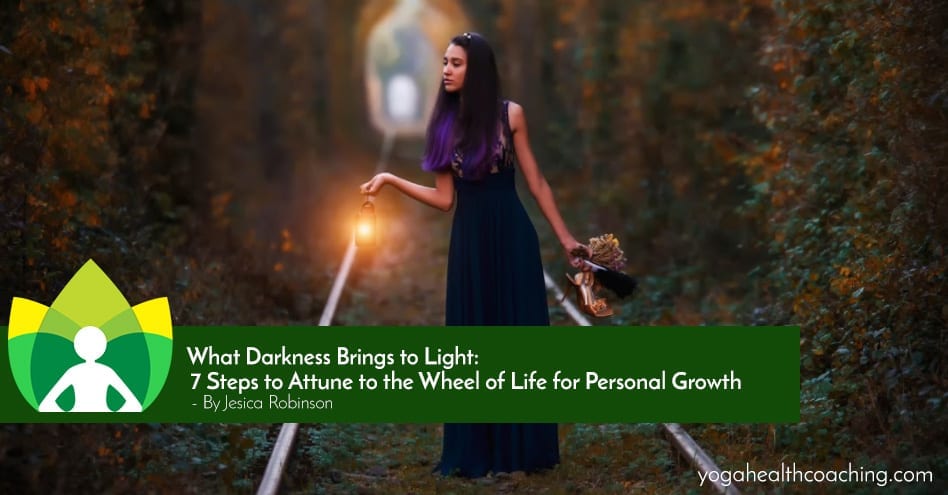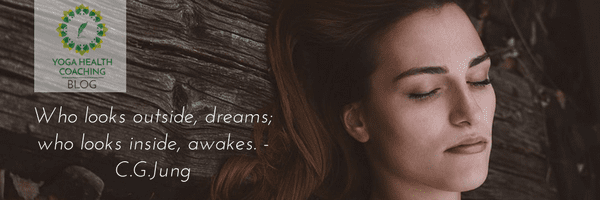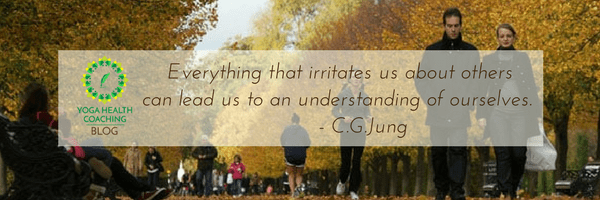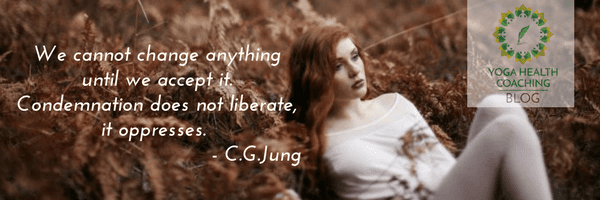
What Darkness Brings to Light: 7 Steps to Attune to the Wheel of Life for Personal Growth
If you’ve been a human for more than a few years, you’ve noticed the cyclical nature of the planet and our existence by now. This is most obvious through the external observation of the seasons, but if you’ve been paying closer attention you may have recognized that INTERNALLY there are also cycles we go through.
Have you ever come around to a lesson learned and experienced it at a much deeper level than when you initially learned it? So deep, in fact, that you couldn’t have even understood your current level of thinking before? One example might be something that was profound to you as a teenager, then later as an adult you felt like you really got it, and then as a parent it landed on you in a totally different way. For me the wheel of the year is like this — providing constant opportunities for growth and deeper meaning in my life.
I, like most, had a meager introduction to it through learning about the seasons as a small child in school. The lesson there was mostly — 4 seasons = 4 different kinds of weather (depending on which part of the world you live in). As a college student I learned a little more by studying about the ancient Celtic traditions. In my 20s and 30s I gleamed more wisdom surrounding the wheel of the year through my yogic studies and practices. And now, in my 40s, as I learn more about Ayurveda through the YHC program, I’m putting together an even bigger picture that syncs up harmoniously with other lessons I’ve learned in life.
Following the wheel of the year can be a rich and meaningful practice of deepening our relationships to Self, one another, the planet, the Universe, and evolving our emotional intelligence.
The Wheel of the Year
In the northern hemisphere we just celebrated the autumn equinox — the beginning of our journey into the darkness. Many cultures have a way of marking this special time and of honoring the transition into darkness (often times with lights and remembering ancestors).
- In the ancient Celtic traditions (and modern day Earth-centered religions) they called it Mabon, and this is when the Goddess Persephone returns to the Underworld.
- Waldorf schools celebrate Michaelmas by telling stories about the slaying of the dragon by St. Michael, who represents courageousness in fighting to defend the Light.
- From India there’s Navaratri — the celebration of the Divine Mother, “Durga”.
Another way to think of this time is as an honoring of the divine feminine and those qualities within ourselves, which are many of the aspects we associate with the right brain — receptivity, intuition, darkness, surrender, nurturing, softness, stillness, creativity, feeling, flexibility, beauty, reflection, etc.

Seeing Yourself “Wholistically”
However you choose to look at it, this time of year carries with it the opportunity for thoughtful reflection of our experiences heretofore, as well as a chance to take a wholistic view of ourselves — our tendencies (conscious and unconscious), our strengths/weaknesses, our light/dark, etc.
Ayurveda takes a wholistic view of life, which is much different from the mainstream perspective that is the cultural “norm.” Wholistic means that in order to understand, diagnose, or treat a problem we must first zoom OUT to see the BIG picture. For instance if a person suffers from depression, rather than throwing them a bone with prescription meds, we would want to get curious about what their life looks like and all of the factors that have contributed to the picture we see in the present — physically, emotionally, mentally, and spiritually.
In the same way, when we talk about personal growth and wanting to shift different aspects of personality, habits, lifestyle, circumstances, etc. we first need to recognize that there is a bigger picture. Often times taking this deeper, wholistic view is uncomfortable, however, if we are not willing to go into the darker depths of self, we cannot expect to move past the bothersome character traits we possess.
Seeing Your Shadow
Carl Jung, a Swiss-born psychoanalyst, was a pioneer of his time, taking on the view that at our core we are whole and good. He coined the term “shadow”, in regards to uncovering the aspects of ourselves that we unconsciously disconnected with in early life (frequently because these aspects were deemed “bad” by society or family). In the words of Therese Bimka:
“The shadow contains what we perceive to be our negative traits, negative aspects of self, the parts of self that we don’t like, the parts that aren’t so pretty, where we are perhaps a bit messier, aspects of self we may hold in disdain or even contempt…Our shadow can also hold strong emotions that are exiled – emotions that we were not taught how to embrace, how to live with, how to manage – like anger or feelings of vulnerability for example. These exiled parts can become quite empowered – even autonomous as split off little entities in psyche. The more woundedness or trauma – the more split off. Shadow work is bringing conscious to what has been hidden and rejected and unexamined. ”

Have you ever felt very bothered by another person’s personality, but couldn’t quite put your finger on why?
That’s your shadow.
When we see aspects of ourselves that we have dis-owned in others, often the unconscious response is criticism of that person, or those personality traits. Sometimes this comes out in mean, passive/aggressive ways. If you’ve witnessed yourself doing this, don’t worry, we all have shadow.
Make Friends With Your Shadow
The good news is that when we do the work of deep reflection and acknowledgement of all of the parts of ourselves, we have the opportunity to move past the ignorance and the unconscious patterns of “acting out”.
The darkness of this time of year makes a fertile ground to go within and do this inner work. Once we reclaim the parts of our psyche and personality that we long ago dismissed, we emerge stronger, more resilient, and WHOLE.
This is where healing occurs.

This is where we emerge ready to do the work to make potent shifts in consciousness and lifestyle that positively impact not only ourselves, but our families, communities, and planet. How could we possibly expect to evolve our habits (like we do in Body Thrive and YHC), grow our impact in our communities, and heal our planet without first accepting and loving ALL of the parts of ourselves?
Are you ready to dive into the darkness? The following are some suggestions you can use during this slower, darker time of the year in order to begin uncovering and reclaiming your shadow:
7 Steps to Attune to the Wheel of Life for Personal Growth
1.Take time to be in the stillness and quiet.
Spend time in nature. Use less words. Embody the more reflective, introspective energy of this time of year. Journal about your experiences with numbers 2-7.
2. Accept feedback.
Pay attention to criticism you’ve received over the course of your life, especially if it’s something you’ve heard a lot.
3. Notice your emotions.
When you feel triggered; heightened emotions like anger, resentment, victim thoughts, intense jealousy, anything that really stirs the pot… pay attention.
4. Who pushes your buttons?
Notice the people you have strong negative opinions about. What traits do they possess that bother you the most?
5. What’s attractive?
Notice the traits you admire most in others. These are also a reflection of you.
6. Accept yourself.
As you begin to notice the ways you are triggered, be non-judgemental towards yourself. Awareness is key.
No shaming! Recognizethat there is Light and Dark within you, and this is simply the nature of all things in the duality of our Universe.
7. Write letters to your inner self.
Sally Kempton, renowned meditation teacher, suggests “The Letter Writing Game”, which has five parts.
1) Write a letter to someone you have strong negative feelings towards really telling them how you feel about them and their behavior (“I can’t stand the way you….”).
2) Write a second letter to someone you admire, explaining to them what you love about them.
3) Read both letters aloud to yourself in the mirror, replacing the word “you” with “I.”
4) Talk about this experience with a trusted friend who can be witness to your feelings and offer meaningful reflection.
5) Sit in meditation, being gentle with yourself, acknowledging both the Light and the Dark within you. Ask that the light and dark be balanced within you, that all imbalances find balance, and that the shadow work you do be for the benefit of all. Sit in silence a little longer, and continue to pay attention to the effects of this work for the next few days.
What Darkness Brings to Light
The deeper we go into our own depths and Darkness, the further and brighter we can emerge into the Light, as both are natural aspects of our WHOLE, beautiful selves.
For me this experience is even more profound as it is mirrored in our environment by the transition from Autumn Equinox to Winter Solstice to Vernal Equinox to Mid-Summer and back again.
How do the rhythmical shifts in the wheel of the year affect your inner world?
I would love to hear about your experiences, and if my suggestions for going deeper during the darkness were helpful to you. Please leave me a comment below!


